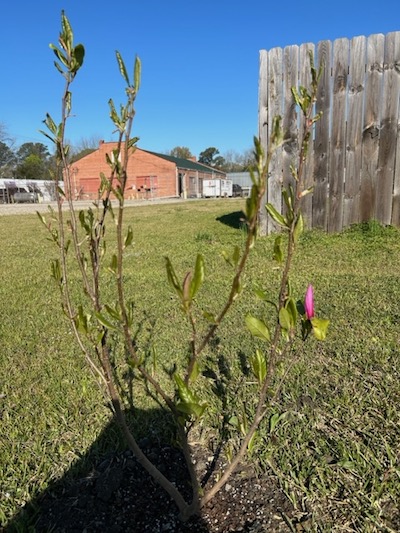The Enfield Economic Development and Revitalization Commission just completed the first phase of planting ornamental Magnolia trees at a portion of homes in the historic district.
The Enfield Historic Preservation District was approved by the state of North Carolina Department of Natural and Cultural Resources Office of Archives and History in August of 2021. Enfield was initially designated a Tree City by the North Carolina Forest Service Urban Community Program when former Mayor E. Kai Hardaway III planted 100 trees in the downtown area in the late 1990s.
The tree initiative continued when Downtown Enfield Restoration and Preservation planted 25 crepe myrtle trees in the downtown business district in 2014 and 2016.

EEDRC received a Halifax Helps grant from Halifax Electric Membership Corporation which contributed to the purchase of the trees in the historic preservation district.
This month EEDRC gave homeowners in the district free ornamental magnolia trees.
EEDRC said the smaller species of the magnolia was chosen because they represent longevity, femininity, perseverance, nobility, beauty and love of nature.
In addition to closing the climate gap, research has shown:
Tree plantings strengthen the community by promoting collaboration and unity.
Magnolia trees absorb about 48 pounds of Co2 per year and produce nearly 4,000 pounds of oxygen per year.
According to the World Economic Forum, trees can reduce heat-related deaths by 40 percent and can lower summer daytime temperatures by as much as 10 degrees Fahrenheit.
Over time, trees increase property value.
Research shows that an average house price can increase 5 to 18 percent higher when properties are close to trees.
For the first time in history, the number of people with homes in cities and towns will outnumber those living in the countryside. “Parks and trees will become an even more vital component of city-town living,” the EEDRC said, “and, besides being beautiful, trees reduce the negative effects of flooding.”








